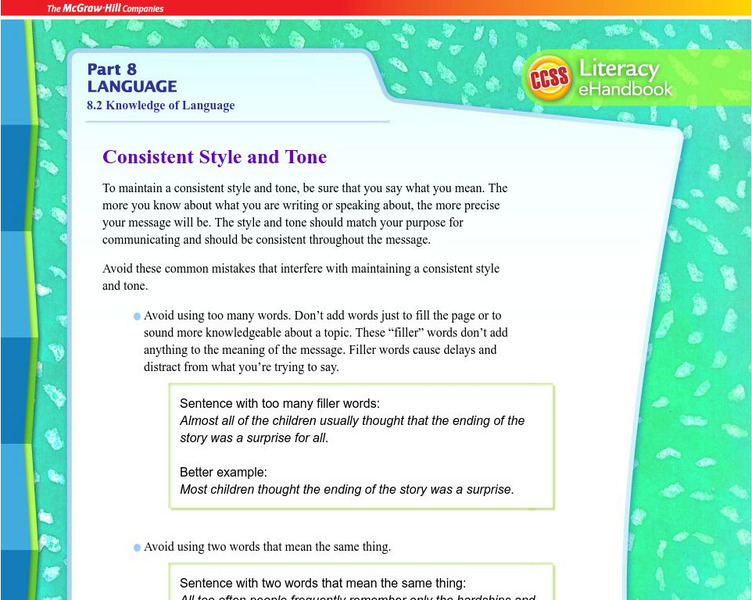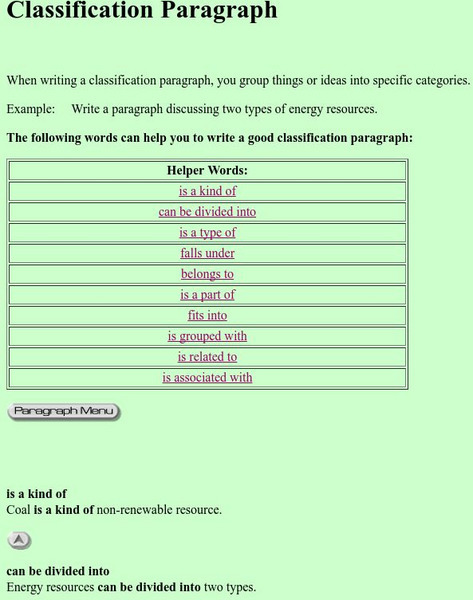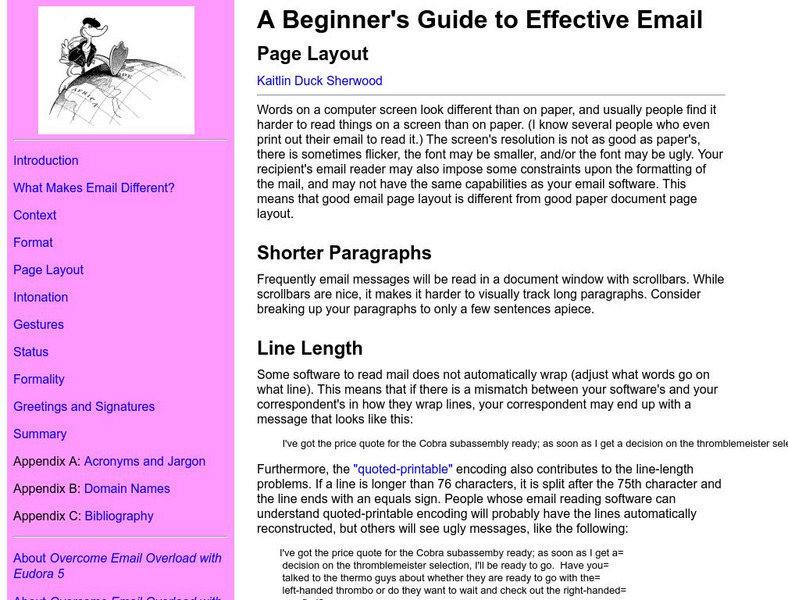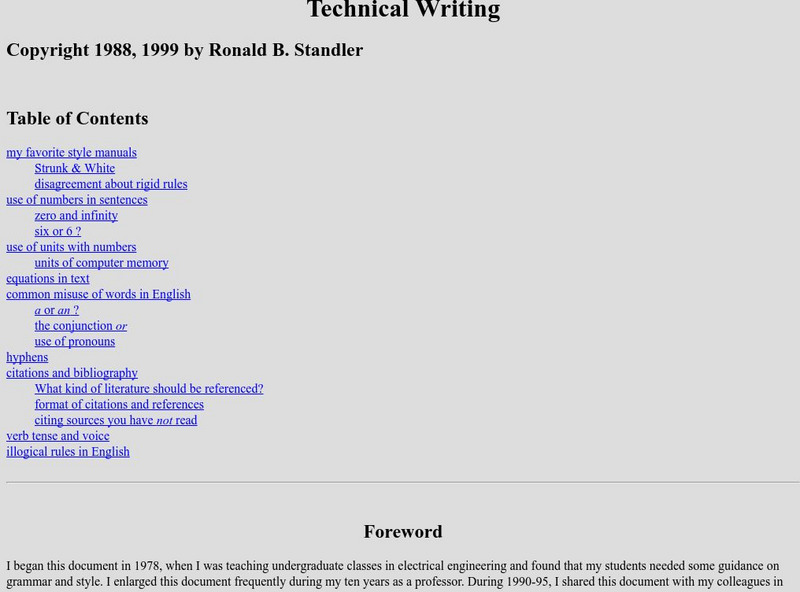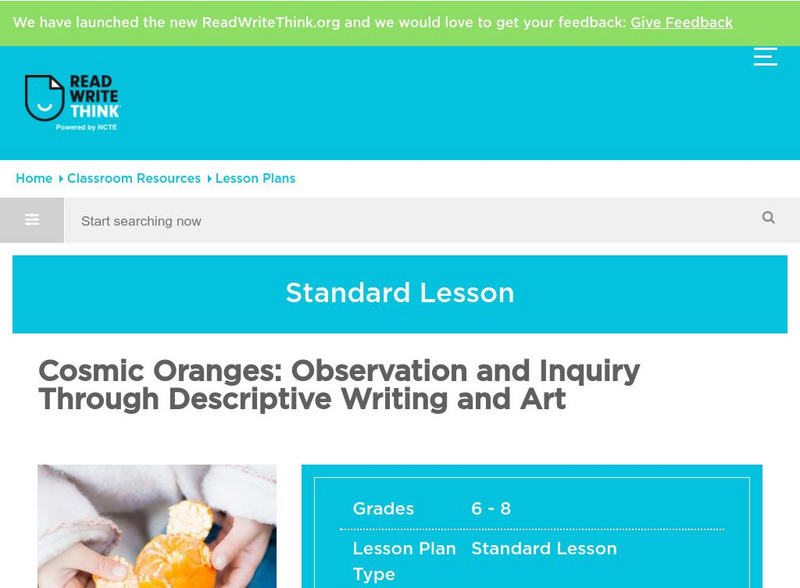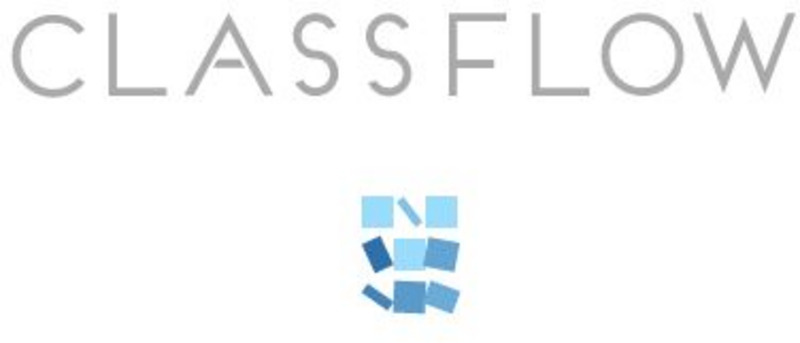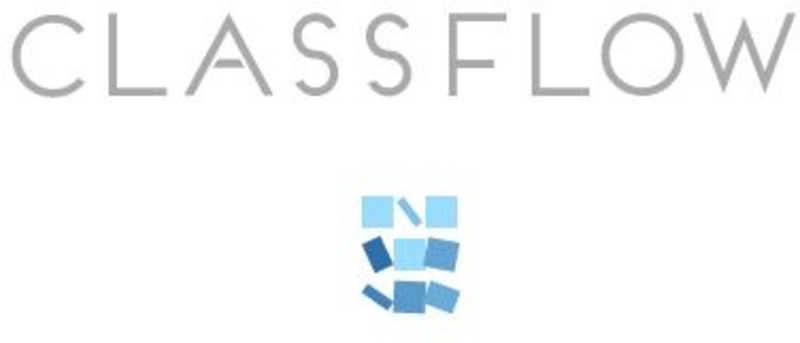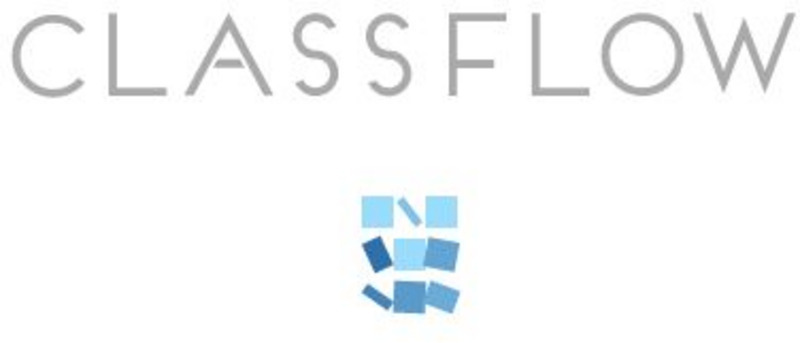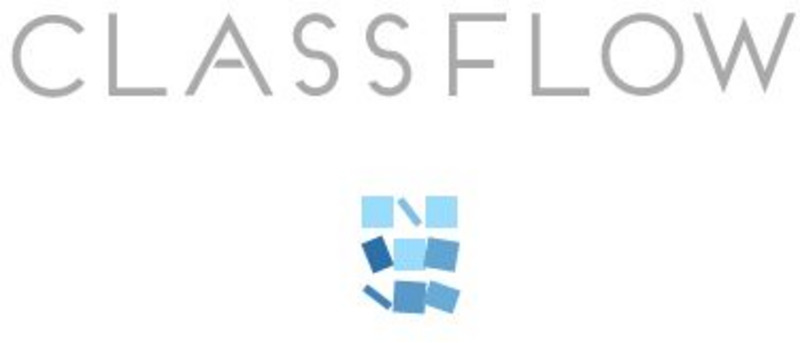Learning Farm
Learning Farm: Common Core Standards: Formal Writing
Writing formally means writing using words that are precise, objective, and impersonal. This lesson gives examples of formal language and also provides games and a test. CCSS.ELA-Literacy.WHST.6-8.2.e
Online Writing Lab at Purdue University
Purdue University Owl: Using Appropriate Language
Knowing the right language for your particular audience is a necessary skill for all writers. No one wants to offend their audience or appear as though they don't know their content. Learn these rules of thumb to become more familiar...
BBC
Bbc Skillswise: Writing: Format and Style
As part of the BBC's Skillswise unit, this site focuses on using various ways of writing for different purposes. For learning tools, the site includes a worksheet, a factsheet, and a quiz.
CK-12 Foundation
Ck 12: 7.1: Tone and Style
[Free Registration/Login may be required to access all resource tools.] Gain a better understanding of tone and style by understanding formal and informal style, learning to write clearly, correcting vague sentences, distinguishing...
CK-12 Foundation
Ck 12: 5.1 Writing About Literature: The Basics
[Free Registration/Login may be required to access all resource tools.] Learn the basics of how to write about literature by asking subjective and objective questions; use tone, diction, and syntax; identify plot elements, and...
Other
Friends University: Patterns of Organization and Their Clue Words [Pdf]
Chart lists patterns of organization with their corresponding clue words.
Other
Tidewater Community College: Writing Center: Organizing Paragraphs and Essays
This page gives a quick, but thorough look at a few good ways to organize a piece of writing.
Curated OER
Macmillan/mc Graw Hill: Writing: Consistent Style and Tone
Learn about maintaining a consistent style and tone in writing.
Khan Academy
Khan Academy: Style and Technique
Use context to figure out how to use language appropriately--formality, irony, understatement, and overstatement.
ACT360 Media
Writing Den: Classification Paragraphs
These tips and phrases can help you create a classification paragraph.
Other
Webfoot.com: A Beginner's Guide to Effective Email Page Layout
This website focuses on page layout and more specifically the length of paragraphs and lines as found in emails.
ReadWriteThink
Read Write Think: Cosmic Oranges
Contains plans for four 45-minute lessons that ask young scholars to use their senses and focus their attention while writing descriptively and observing scientifically. In addition to objectives and standards, this instructional plan...
University of Ottawa (Canada)
University of Ottawa: Start With an Outline
This site from the University of Ottawa provides a brief, but effective, explanation of how to use a sentence outline to organize and shape your paper.
University of Victoria (Canada)
The U Vic Writer's Guide: Literary Term: Motif
This site from The UVic Writer's Guide provides a brief description of the literary term "motif."
ReadWriteThink
Read Write Think: Lesson Plan: Audience, Purpose, Language in Electronic Messages
Lesson plan considers changes in writing style since the inception of e-mail and text messaging.
Letter Writing Guide
How to Write a Business Letter
This student-friendly site contains the purpose of business letter writing. In addition, the article discusses the elements of good business letter writing.
Other
Prezi: Tone, Diction, and Analysis of Word Choice
Slideshow explores the connection between word choice and the author's tone.
ClassFlow
Class Flow: Paragraph Structure
[Free Registration/Login Required] This lesson was designed to help students to analyze how individual paragraphs are structured in writing.
ClassFlow
Class Flow: Six Traits of Writing Organization
[Free Registration/Login Required] This lesson reinforces the importance of ensuring that purpose and pattern match well.
ClassFlow
Class Flow: Spelling and Writing
[Free Registration/Login Required] Students proofread and correct mistakes in a writing piece, and then apply the writing process to create a tall tale story. Additionally, this lesson helps students understand the purposes and elements...
ClassFlow
Class Flow: Using Specific Detail
[Free Registration/Login Required] This elementary flipchart promotes creative writing using supportive details. Students will explore examples from literature and consider ways to improve their writing.
ClassFlow
Class Flow: Writing Skills Review
[Free Registration/Login Required] In this lesson students will identify errors in sentences and choose the best corrections.
ClassFlow
Class Flow: Writing a Report or Essay
[Free Registration/Login Required] This flipchart is intended for grades 3-5 and outlines the steps in writing a report or essay.


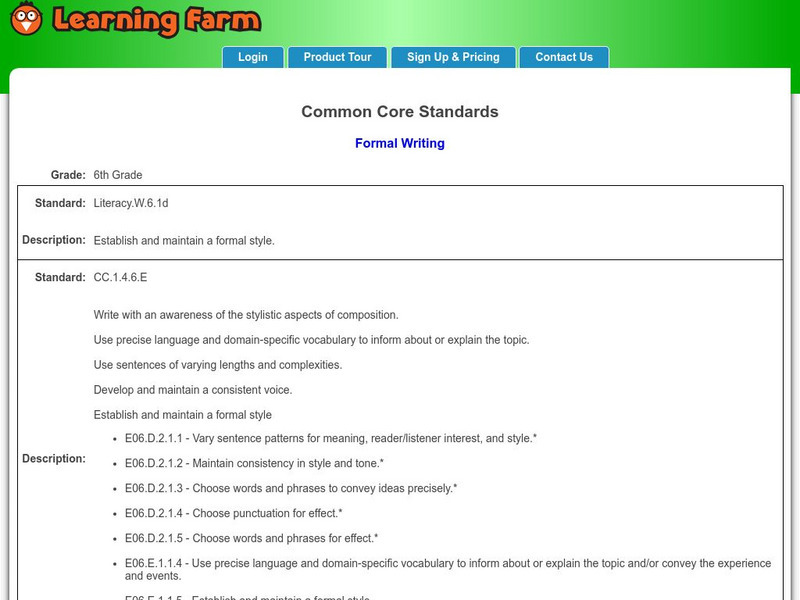

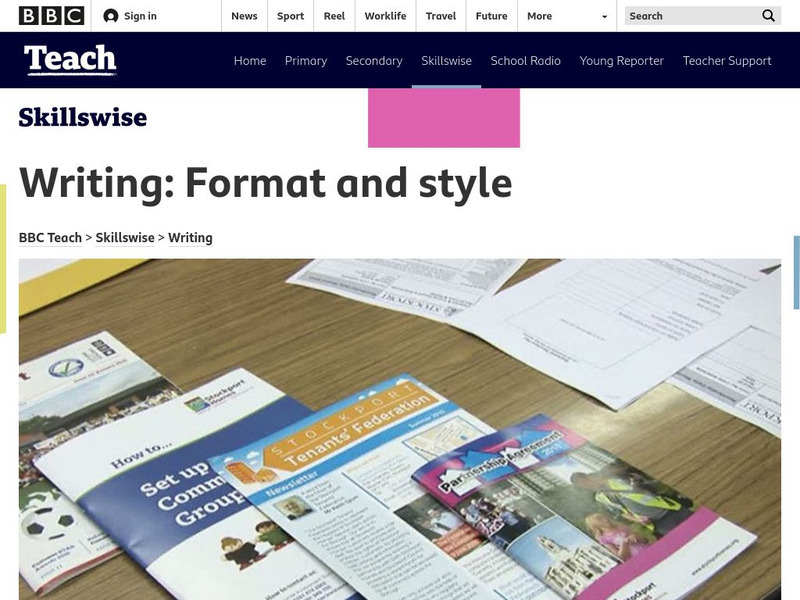

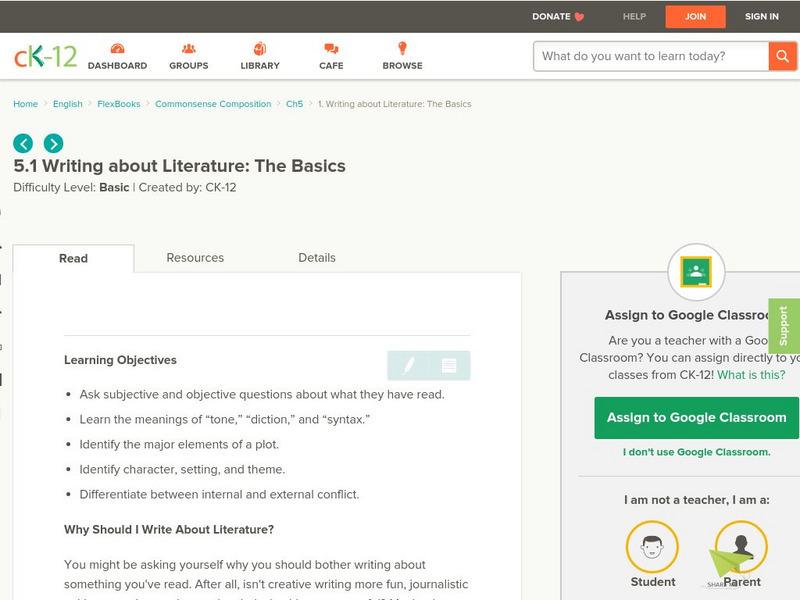
![Friends University: Patterns of Organization and Their Clue Words [Pdf] Graphic Friends University: Patterns of Organization and Their Clue Words [Pdf] Graphic](https://d15y2dacu3jp90.cloudfront.net/images/attachment_defaults/resource/large/FPO-knovation.png)
